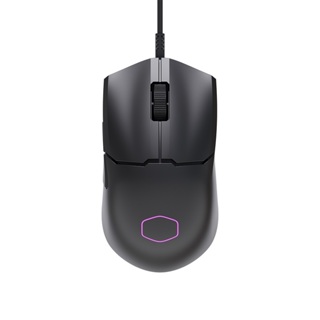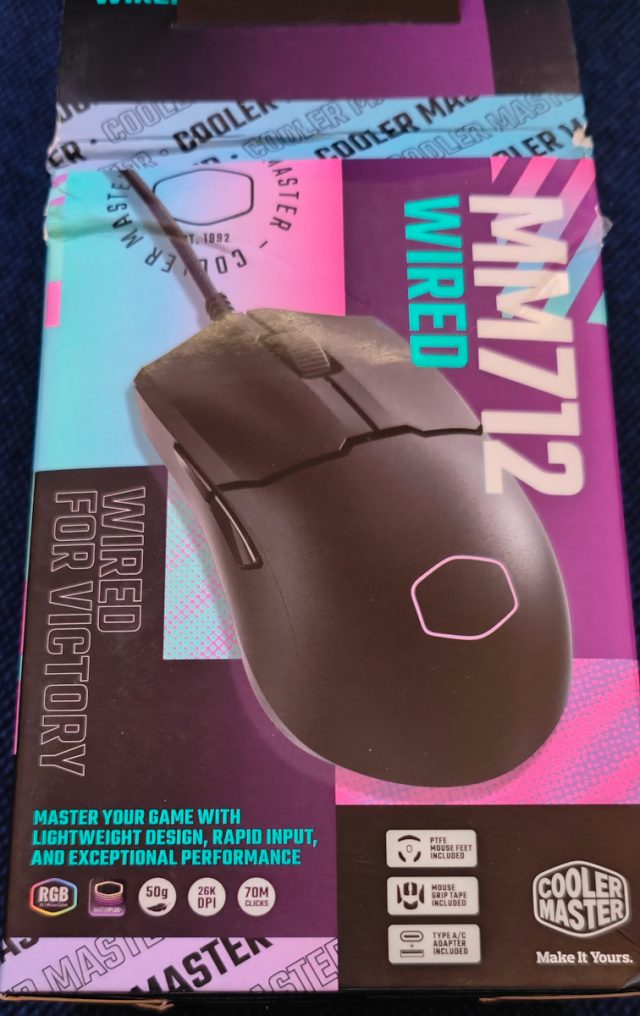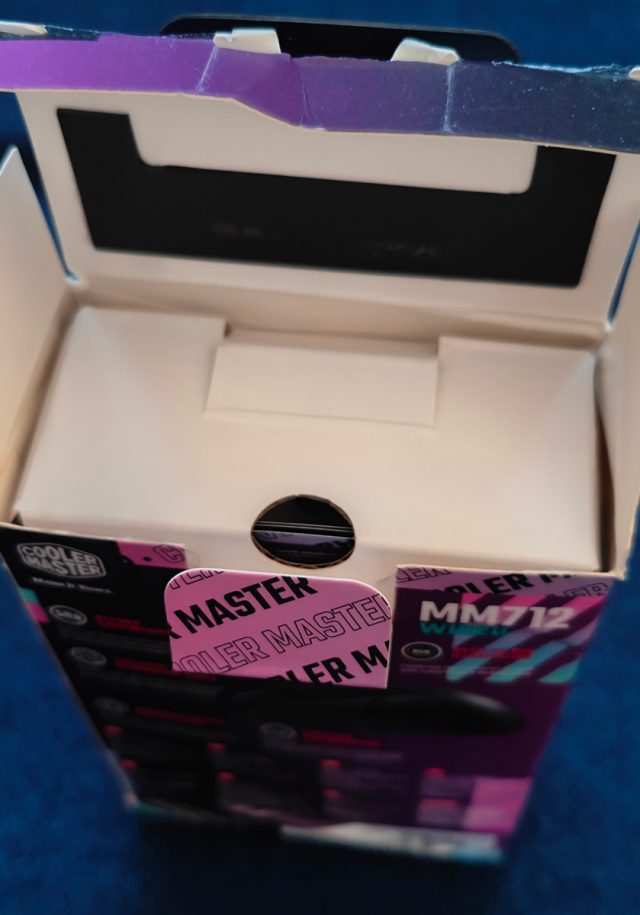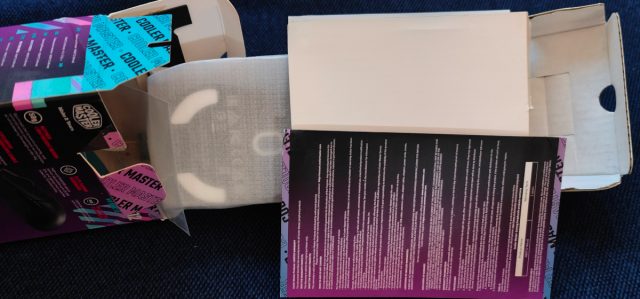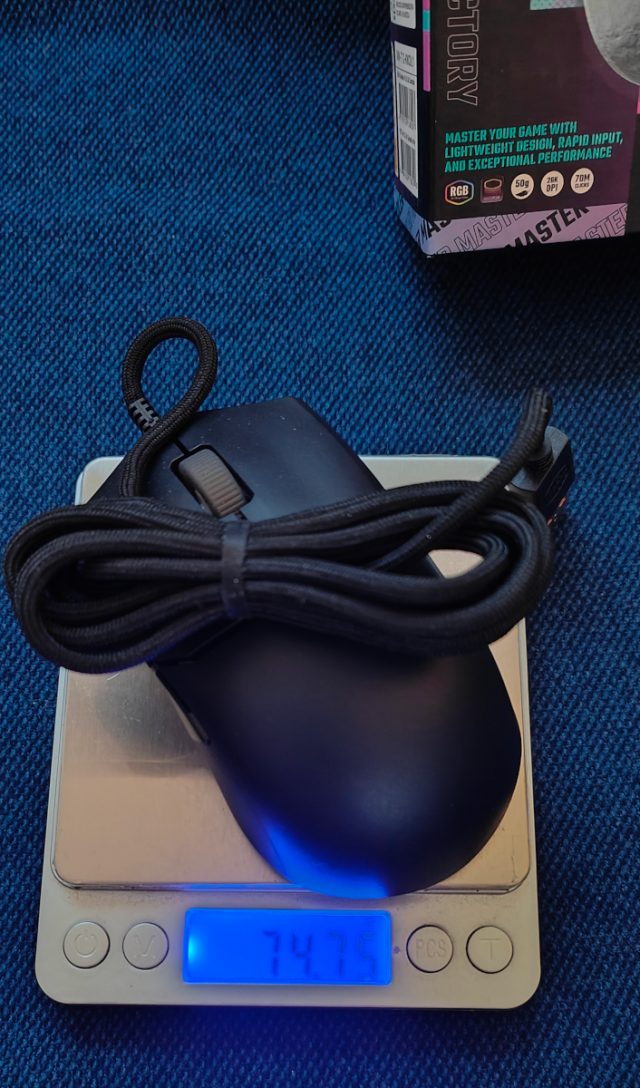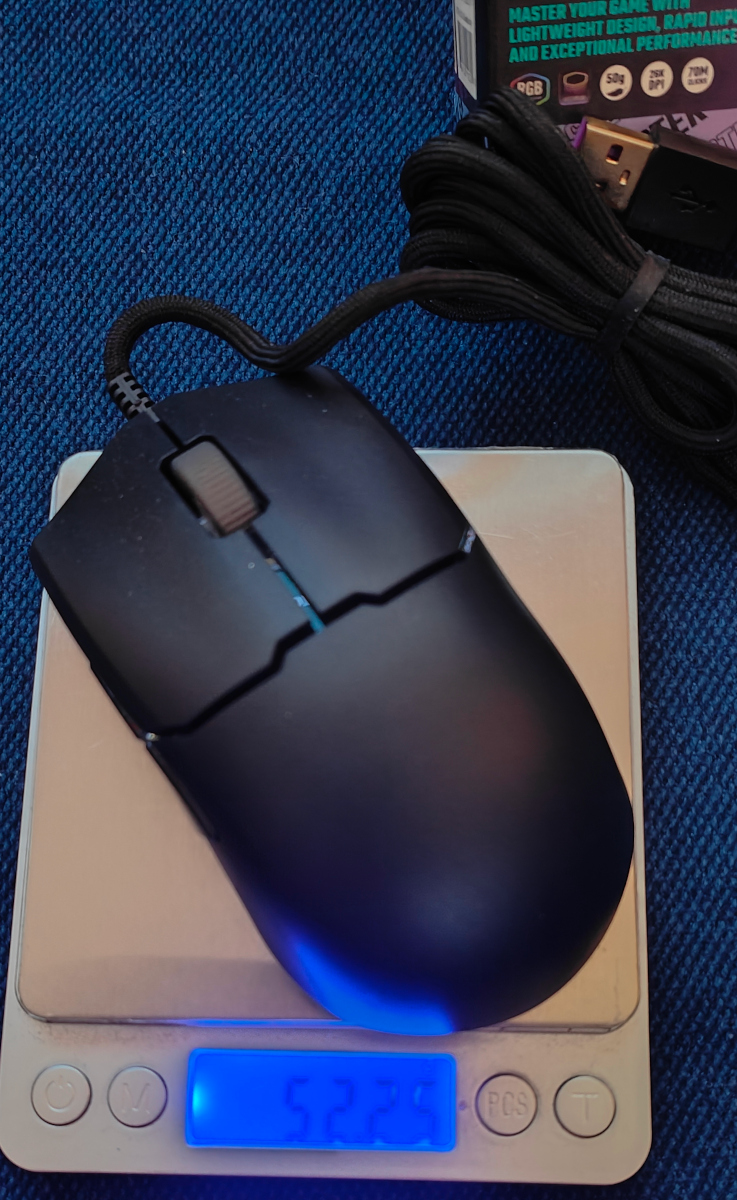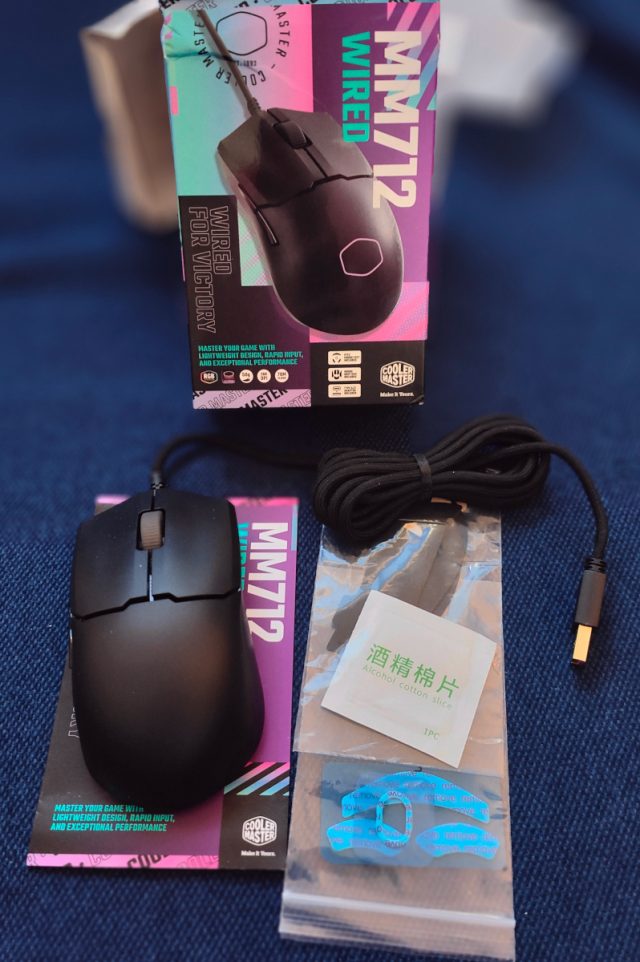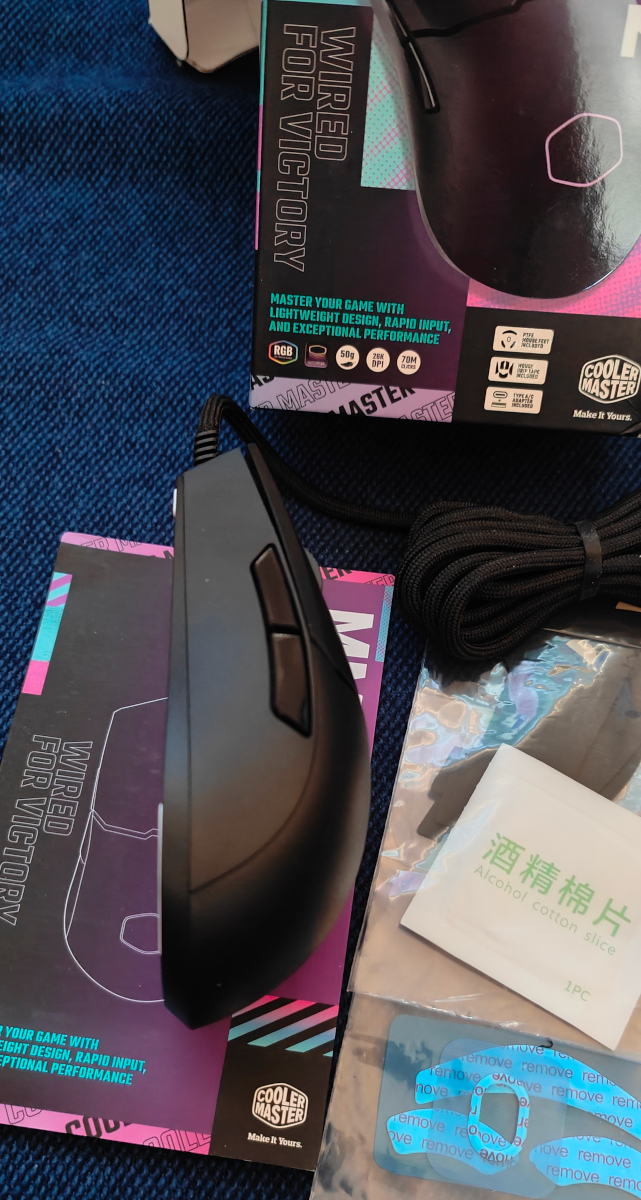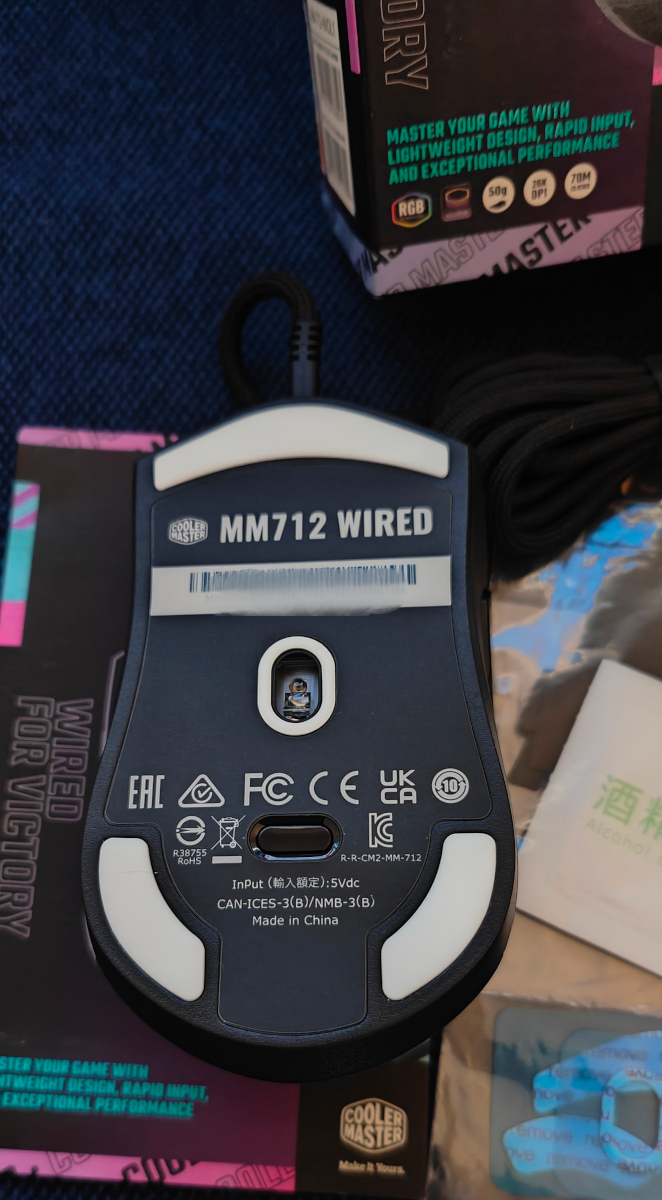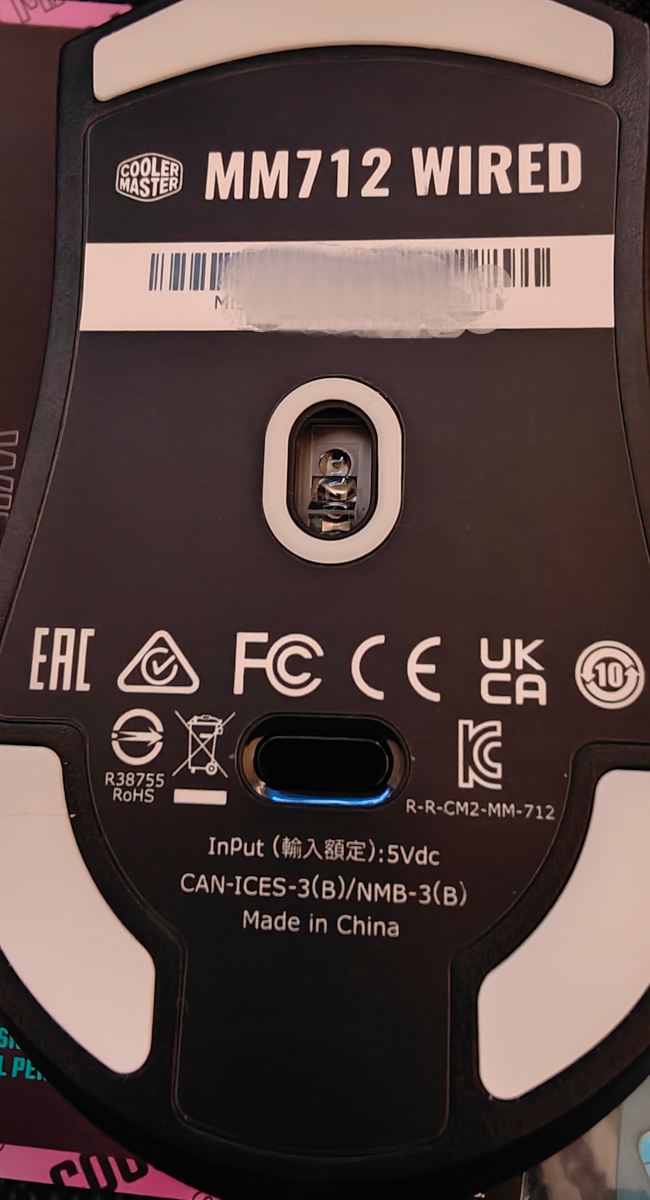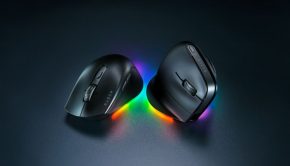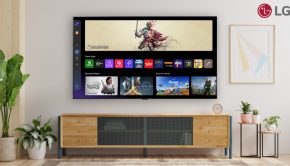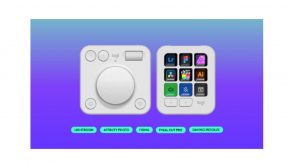Cooler Master MM712-Wired Pro-Gaming Mouse Review
Shapely contours, broad lower body, two big shapely buttons and one honking wheel, she’s a beauty!
Of course we are talking about the Cooler Master MM712-Wired Pro-Gaming Mouse. Another gaming mouse based on the PixArt PWM3395 chipset, providing the necessary DPI resolution for precision targeting, PTFE feet for frictionless movement, and side buttons for customised command-bindings.
Specifications
|
Product Number |
MM-712-KKOL1 |
|
Mouse Grip Type |
Claw, Palm, Fingertip |
|
Mouse Material |
ABS Plastic |
|
Mouse Feet |
PTFE |
|
Mouse Color |
Black |
|
Mouse LEDs |
Yes, RGB on logo |
|
Mouse Sensor |
PixArt PWM3395 |
|
CPI / DPI |
400-800-1200(Default)-1600-3200-8000-26000 |
|
Mouse Tracking Speed |
650 ips |
|
Mouse Lift Off Distance |
< ~2mm |
|
Mouse Polling Rate |
1000Hz |
|
Angle Snapping |
Yes |
|
Mouse acceleration |
50g |
|
On-board Memory |
512KB |
|
Mouse Lifespan (L/R switches) |
Optical Switches, 70 Million |
|
Mouse Buttons |
6 |
|
Software |
Yes, Cooler Master MasterPlus+ Support |
|
Mouse Cable Length |
Fixed Ultraweave cable, 1.8m |
|
Mouse Dimensions |
116.5 x 62.4 x 38.3 mm / 4.587 x 2.457 x 1.508 inches (L x W x H) |
|
Mouse Weight |
< 50g |
Source: Cooler Master
Unboxing & First Impressions
Unfortunately the box was a little (read lot) damaged in shipping.
The carrier and mouse sort of came out in a big clump and then it was a bit of a struggle to separate and prize the mouse out.
The mouse was striking and the texture reflected light perfectly. An elegant and well thought design.
The left and right buttons are uniform in both movement and sound, but were a bit louder than expected. The side buttons also were uniform and overall all buttons responded well. The wheel button has a pleasant ‘snap’ back, with a loud and discernible sound with the feeling of each scrolled notch passing through the fingertips.
The cable sheath is soft and durable, but did feel perhaps 1-2mm thicker in diameter than the internal wires it protects. This gave it a more puffy appearance, and when felt, it seemed that it just wasn’t pulled taught when assembled.
The box includes the additional spare PTFE glide feet, and the attachable rubber-feel grips, which are all optional and can be attached to preference.
Design
The shape of the MM712 is slightly shorter than other mice with this chipset, yet the surface area of the Left and Right buttons are just a touch greater as the buttons have a wider span when compared to the HyperX Pulsefire Haste or MSI Clutch GM41 or even just a Microsoft Standard mouse.
The wheel also sits much higher compared to other mice and with there being less surface area touching the palm, the user will tend to tilt their hand back.
The travel distance of the Left and Right buttons is measured ~3mm at the greatest point, adding +/-1mm of flex. That is quite a travel distance for each click, especially in a gaming context for a first person shooter. In comparison to the HyperX Pulsefire haste a consistent 1.5mm, there is quite a larger movement required.
The location of the button mechanism is ~15mm (+/- 0.3mm) from the longest point (near the cable) or 10mm from the outer edge to the middle of the button surface. The button mechanism is actioned directly down, so in simple terms, the physical button is in the middle of the button cap. This means that the user will need to depress the button 3mm and release 3mm for a total of 6mm of travel for one click operation.
The Left and Right button cap of the MM712 is also only 1.5mm thick. Considerably thinner than other mice.
How will this impact performance?
**As measured by calipers.
Testing and Performance
The mouse is comfortable and feels great in the hand, but click performance testing revealed that the greater travel distance for click operations had a direct impact in the number of clicks performed per minute. Regardless of the number, the main concern was the level of fatigue that is felt.
The travel distance per click is only one reason. The small body forced the user to roll the hand/wrist up and forward, placing backwards pressure on the knuckles, restricting the movement of the index and middle fingers, whilst also searching for a sweet spot to find the best click-zone on the button cap. The sweet spot happens to be directly over the button, which is in the middle.
As the Left and Right button caps are so much thinner, there is more flex introduced with every click. A medium to firm click introduces lateral (left-to-right) bowing and flexing with a tendency to roll inwards toward the wheel. This meant that the right index finger also rolls inwards towards the wheel with every click.
To reduce fatigue, the average user would have to click with the middle joints of the finger instead of the finger tip, which is just – no.
It is not all bad though. With the use of a wrist cushion/pad, the restricted movement in the joints can be slightly improved and provided fast movement is not required, the mouse still feels comfortable in the hand.
The rubber grips were not tested, and would not have influenced the observations.
Final Thoughts
The comfort of this mouse is immediately felt. Although the included grips texture may or may not be to everyone choice, the inclusion is very much appreciated. The body shape and movement is natural and is ready for immediate use with no amount of adjustment or “getting used to” this mouse is required, provided the previous was of a similar shape.
The design of the main buttons and button caps cause far too much click-fatigue and serious gamers will find this mouse frustrating and fatiguing to use. Had CoolerMaster used a thicker plastic that did not flex and shorten the travel of the buttons, then this mouse may be a serious contender, especially in smaller hands of young gamers.
In comparison to several other reviews of mice with the same chipset, the CoolerMaster MM712 also has louder switches and an even louder scroll wheel. There is also less surface area to achieve a similar desired weight target, but overall the design is inferior to the competition.
The location of the DPI button is on the underside, where as competitors have placed the DPI button on the top of the mouse. The disadvantage for the underside placement is that DPI is effectively locked in and cannot be fast-changed during game play – But in fairness, that is perhaps rarely an issue for most gamers. CAD designers and other technical users may find a preference for a top button instead.
This is a great, but flawed product. For general use and where a smaller body mouse is desirable, this mouse is a great product and the benefits of the Pixart PWM3395 and PTFE feet cannot be overlooked. For serious gamers and hardcore users, this may not be the best fit.
Summary: The CoolerMaster MM712 Wired Mouse sports great hardware but with flawed button design it is unsuitable for marathon and precision gaming. Accurate, robust and versatile, it is best placed as a standard workstation mouse.


